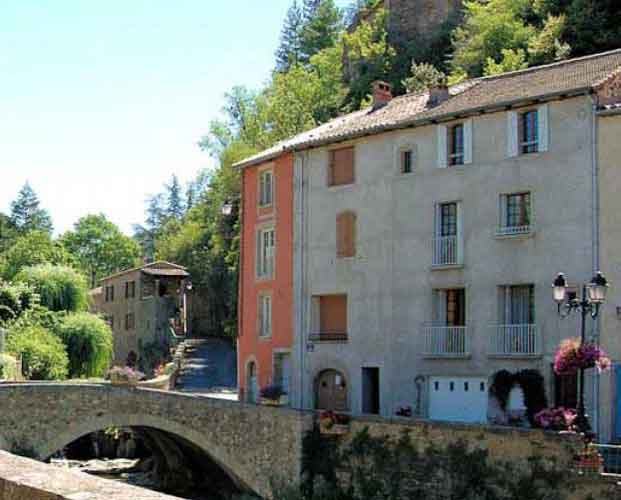FORMER TRADES AND OCCUPATIONS
TANNERY

In the beginning of the 19th century, Leon and Gratien BOULOUYS established a tannery in Lunas similar to others in the Hérault region at the time in Montpellier, Ganges, Aniane, Bédarieux and Pézenas.
The business occupied what are now the last three houses of the area known as the " Barry ", near the Nize bridge. The ground floor of the building was used exclusively for treating the hides, the first and second floors were living quarters while the third floor was where the treated hides were dried.
The hides were first cured by being treated with salt to stop them going mouldy and then placed in a stone vat of lime solution before copious rinsing in other vats with "clear spring water".
Then they were conscientiously scraped to remove the grease, wool and other unwanted material that stuck to the hide. Once that was done, the tanning process could begin.
The tanning product came from the bark of the numerous chestnut trees in the region. This bark was stocked in the Rosque mill, on the way to Joncels, where it was crushed and reduced to a powder. This permitted a good quality tanning method that resulted in solid, flexible and very long-lasting hides.
The tanneries found across the Hérault region, including the Lunas one, fabricated heavy duty, hard-wearing hides. They were treated with different oils to make them smooth and then dried either inside or out, depending on the weather.
The worked leather did not have the fine supple grain of that produced by the big factories in northern France. Instead the Lunas leather was strong and solid - good for making shoes and boots for the farmers in the Rouergue, Gévaudan, Aveyron, Vivarais and Grands Causses.
The archived statistics from the Hérault department from 1824 offer precious information about the volume and turnover figures of the BOULOUYS brothers’ business as follows:
Lunas Tannery: employees: 2 - Metric quintals of used tan product: 292 - Tanned pieces of leather: 183 oxen / 1,100 calves / 1,115 sheep / 188 cows - Quantity of tanned leather in metric quintals: 160 - Total value of the tanned products: 13,800 francs.
In addition to the accounts listed above, there were the scrapings. It should be remembered that the people of Lunas were poor and lived a hard life where nothing was wasted. Until recently, there were still Lunas inhabitants who could remember how the tannery workers mixed the hide scrapings on the white stones along the banks of the Gravezon. They were worked into round round moulds with the resultant ‘cheeses’ dried in the sun along the river’s edge. They were then used as fuel as they burned very slowly and were used in homes to keep fires burning through the night.
But everything finally comes to an end and the Lunas tannery closed its doors for the last time in 1910.
On the banks of the stream arround 1900 (photo)